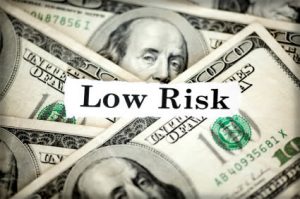Dividend Value Builder Newsletter
Inverse ETFs Provide Portfolio Hedging Strategies
Hedging is a potent risk diversification strategy employed by purchasing an investment that is inversely correlated to other assets in a portfolio. Inverse ETFs provide a low cost vehicle for a portfolio manager to take the market risk partially or wholly out of an entire portfolio or a specific segment of a portfolio.
Hedging Strategies
Hedging strategies have become dirty words lately. People have correlated it with Hedge Funds and “betting against America”. In reality hedging, like many things, can be abused or used incorrectly and cause harm. When hedging is used correctly it can be a useful tool and a prudent part of risk management.
Think of hedging as insurance. A homeowner will usually hedge the chance of a fire destroying his home by purchasing fire insurance. Financial hedging is portfolio insurance, and when done properly, can reduce risk and improve the safety of an investment portfolio. Professionals use futures and options contracts to hedge, but most investors should not use these financial instruments due to their high risk if used improperly.
Inverse ETFs
Inverse equity index ETFs allow a portfolio manager to take the market risk partially or wholly out of one’s portfolio. These investment vehicles are designed to move inversely or the opposite direction of an index. Some inverse ETFs move 2 or even 3 times as much as the underlying index. These are leveraged ETFs and require frequent rebalancing.
Because of the way the leveraged ETFs are designed they can lose money when the market if extremely volatile. Their design makes the leveraged inverse ETFs a powerful hedge, but dangerous for anyone who doesn’t understand how they work, or does not pay close attention to the requirement of frequent rebalancing.
Using an Inverse Equity Index ETF Example
Here is an example of how a portfolio manager might use a leveraged inverse equity index ETF. Let’s say you own $100,000 of 20 great companies with solid balance sheets and high dividends, but believe strongly the stock market is going to decrease in value. You may not want to sell your stocks so you buy $50,000 of an ETF that moves 2 times the inverse of the market. You now have removed all the market risk from your portfolio of stocks. If the market moves lower, as you believed, you will make money on the ETF to make up for losses in your stocks. Of course, if you are wrong and the market moves higher, you will lose money on the ETF that will offset the gains in your stocks.
Another option, and probably a more prudent option, would be to partially hedge your portfolio by purchasing a smaller amount of the inverse ETF. The purpose of hedging is to be comfortable with your market risk but continue receiving dividends and not incur the taxes and commissions due to selling and buying your individual stocks.
One of the benefits of using the inverse ETF as a hedge is that your risk is defined and limited. Keep in mind an investor who shorts the market outright would, in theory, have undefined and unlimited risk. The risk of an inverse ETF is the amount you have invested.
Using Inverse ETFs as a hedge can be a potent diversification strategy to reduce asset correlation and investment risk. It is also a strategy that requires careful application, monitoring, and frequent rebalancing. Used properly, inverse ETFs can be a valuable tool to hedge portfolio risk.
Related Reading:
5 Portfolio Risk Management Strategies
Minimize Large Portfolio Drawdowns
Invest With Confidence in Less Time - Manage Your Portfolio Without Behavioral Errors

